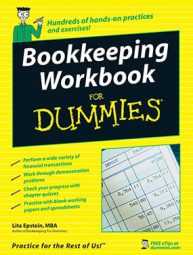Whenever your business sells to customers on credit, you will need to monitor how quickly your customers are paying their bills. You also need to keep track of customers who aren’t paying on time. As you do your bills at the end of the month, make a list of all your customers and how much money they have outstanding in their accounts and the date on which the original charge was made.
As an example, here is a list for five customers who bought on credit from the office supply store and have not yet paid their bills as of 3/31/2011:
| Customer | Date of Purchase | Amount Purchased |
|---|---|---|
| Sue’s Insurance Company | 3/5/2011 | $79.50 |
| Joe Tester | 2/25/2011 | $64.20 |
| First Baptist Church | 2/15/2011 | $85.60 |
| 3/15/2011 | $67.20 | |
| Jane Doe | 1/15/2011 | $49.50 |
| Harry Man | 12/23/2011 | $89.20 |
In addition to sending out invoices on April 2, you should also prepare an Aging Summary for your manager that summarizes all your customers that owe money. You would group this summary based on time of purchase.
For example, here is what an Aging Summary report would look like as of March 31 for all outstanding customer accounts:
| Customer | Current | 31–60 Days | 61–90 Days | >90 Days |
|---|---|---|---|---|
| Sue’s Insurance Company | $79.50 | |||
| Joe Tester | $64.20 | |||
| First Baptist Church | $67.20 | $85.60 | ||
| Jane Doe | $49.50 | |||
| Harry Man | $89.20 | |||
| Totals | $146.70 | $149.80 | $49.50 | $89.20 |
You can quickly see who is behind in their bills and how much old debt you have on your books. You should give a copy of this information to your manager, as well as the sales or store manager so they can make decisions about whether or not they want to continue offering credit to customers who aren’t paying their bills. Your company will also need to establish a collections process.
Sometimes your company will have to accept the fact that you’ll never collect the money from some customers. When that happens, you’ll need to write off the loss as a bad debt. Each company sets its own policy on how long they will keep an account on the books before it is written off as bad debt.

